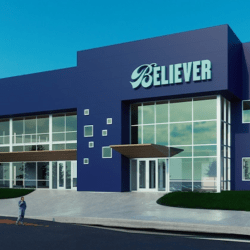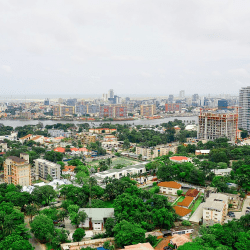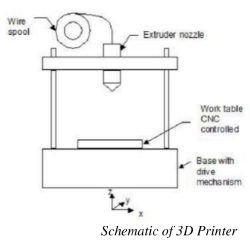A decade ago, the idea of growing real meat from animal cells was often met with skepticism. Even Prof. Yaakov (“Koby”) Nahmias, the founder and president of Believer Meats, initially doubted the concept. He once famously called cultivated meat “the stupidest idea I’ve ever heard,” primarily because of the astronomical costs associated with producing it at scale. But fast forward to 2022, and Nahmias is leading the charge in the global cultivated meat revolution. The industry, now projected to become a $20 billion market by 2030, is already making inroads with consumers, including its availability in Singapore, and is on track to hit the U.S. market in 2023. Believer Meats is set to begin production at a state-of-the-art facility, positioning itself as a key player in this rapidly expanding market.
What is Cultivated Meat?
Cultivated meat is a brand-new product category that many consumers are still getting acquainted with. One of the most common questions Believer Meats receives is: What exactly is cultivated meat? Here’s the essential breakdown:
Cultivated meat is not a veggie burger or a plant-based substitute. It is real meat, made by growing animal cells in a lab, without the need to raise, harm, or slaughter animals. The final product delivers the same structure, texture, and sensory experience as conventionally farmed meat. What sets it apart is how it’s made — combining animal cells with plant-based ingredients to create a complete and satisfying product, while sidestepping the ethical and environmental drawbacks of traditional meat production.
The Process: How is Cultivated Meat Made?
The process of making cultivated meat involves several stages, and different companies have adopted different methods to achieve the desired result. At Believer Meats, the approach is rooted in innovation, scalability, and efficiency.
- Cell Selection and Growth
While some companies start with stem cells, Believer Meats uses fibroblast cells. These cells are more stable and replicate quickly without genetic modification. This allows Believer Meats to produce meat more efficiently, at a lower cost, and in larger volumes. By using fibroblast cells, the company can scale production faster than competitors who rely on slower-growing stem cells. - Spontaneous Immortalization
A key challenge in cultivated meat production is that most animal cells have a limited lifespan; they can only replicate a finite number of times before dying off. To maintain a continuous supply of cells, most companies either repeatedly extract cells from animals or genetically modify cells to make them immortal, enabling indefinite replication. Believer Meats, however, employs a non-GMO process known as spontaneous immortalization.This process involves identifying rare fibroblast cells in a sample that undergo a natural event, allowing them to replicate indefinitely without any genetic manipulation. These cells are then isolated and grown into immortal cell lines that can continuously divide and grow. - Cultivating Cells in Bioreactors
Once the immortal cell lines are established, they are grown in large bioreactors — fermentation tanks similar to those used in brewing beer. Inside these bioreactors, the cells replicate in a nutrient-rich medium that mimics the environment they would find inside a living animal. Over time, the cells grow into a dense biomass, which forms the foundation of cultivated meat. - Harvesting and Combining Ingredients
When the cell biomass reaches optimal density and volume, it is removed from the bioreactor. The next step is to separate the cells from the growth medium and fortify the resulting biomass with plant-based proteins and other ingredients. These added components help achieve the desired taste, texture, and structure of conventional meat. The final product not only looks like meat but also provides the same satisfying flavor and mouthfeel.
The Cultivated Meat Industry: From Lab to Consumer
The journey of cultivated meat from a niche science experiment to a mainstream food option has been rapid. Despite initial doubts, technological advancements have significantly brought down production costs, making it increasingly viable for mass production. Companies like Believer Meats have developed methods to scale production efficiently, focusing on reducing costs and increasing output to meet growing consumer demand.


The industry’s progress has already led to cultivated meat being served in restaurants in Singapore, where it has been approved for commercial sale. With Believer Meats preparing to open its U.S. production facility, it’s only a matter of time before cultivated meat becomes a staple in grocery stores and restaurants across the country.
What Makes Cultivated Meat Revolutionary?
- Sustainability
Cultivated meat offers a more sustainable solution to meat production, requiring far fewer natural resources such as water and land. It also significantly reduces greenhouse gas emissions compared to traditional livestock farming. These environmental benefits make cultivated meat an attractive option for those looking to reduce their carbon footprint while still enjoying meat. - Animal Welfare
One of the most significant ethical concerns with conventional meat production is the treatment of animals in factory farms. Cultivated meat bypasses this issue entirely by producing real meat without the need for animal suffering. This makes it a compelling alternative for consumers who are concerned about animal welfare but are not ready to give up meat altogether. - Food Security
As the global population continues to grow, the demand for meat is expected to increase. However, traditional meat production is resource-intensive and may struggle to keep up with demand. Cultivated meat, on the other hand, can be produced more efficiently and in controlled environments, providing a reliable and scalable source of protein.
Challenges and Future Outlook for Cultivated Meat
While the potential for cultivated meat is vast, there are still some challenges that the industry must overcome:
- Cost and Scalability: Although costs have come down significantly, cultivated meat is still more expensive to produce than traditional meat. Scaling up production to meet global demand will require further technological advancements and investment.
- Consumer Acceptance: Public perception of lab-grown meat is another hurdle. While some consumers are excited about the environmental and ethical benefits, others may be hesitant to try a product that is grown in a lab. Educating consumers about the safety, taste, and benefits of cultivated meat will be crucial for its widespread adoption.
- Regulatory Approval: In many countries, cultivated meat has not yet been approved for commercial sale. As regulatory frameworks evolve, companies will need to navigate complex approval processes to bring their products to market.
Conclusion
The journey from skepticism to innovation in the cultivated meat industry is a testament to the power of science and entrepreneurship. Led by pioneers like Prof. Yaakov Nahmias at Believer Meats, the industry has made significant strides in making lab-grown meat a reality. With its combination of sustainability, animal welfare, and food security benefits, cultivated meat is poised to revolutionize the food industry in the coming years.
As Believer Meats prepares to expand its production capabilities and bring its products to consumers worldwide, the future of meat — one that is more ethical, sustainable, and accessible — is within reach.












